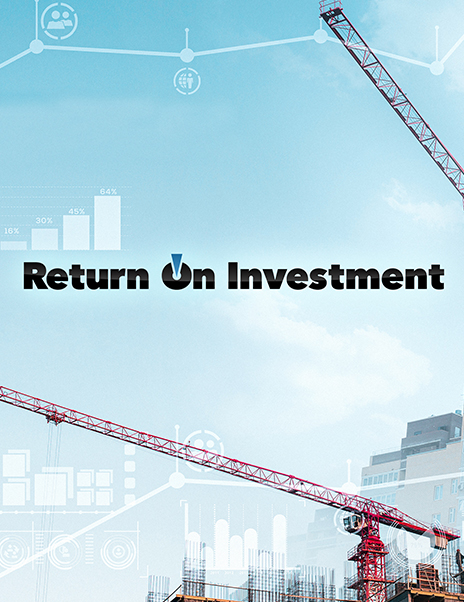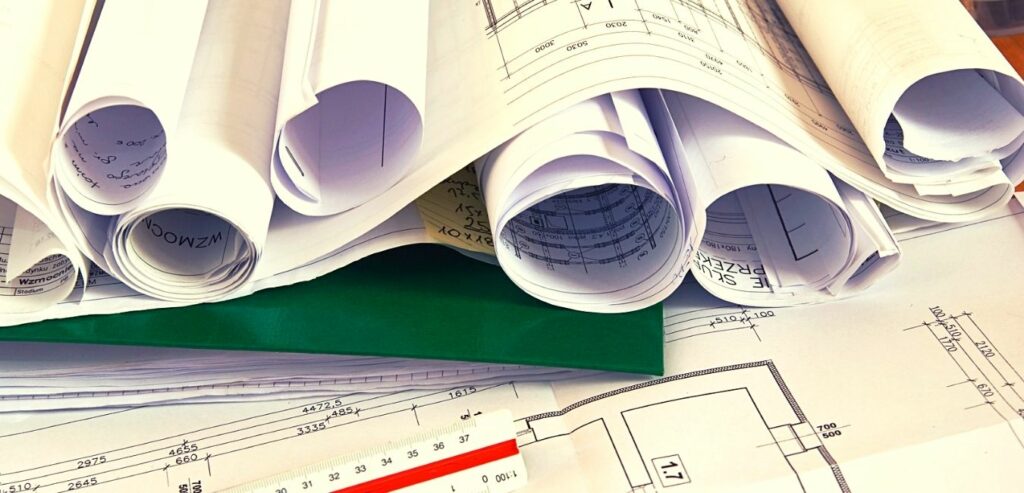As a construction manager, you signed up to manage a project, but you have a lot of paperwork on your desk. Contractors generally manage numerous documents, including blueprints, permits, and change orders. If you don’t organize the documents well, they will take away a lot of your valuable time that you would otherwise have spent dealing with serious construction issues.
Figuring a proper construction document management system is a huge task, but figuring out a plan that works for you will save you a lot of time and money on your projects. You do not have to be constantly overwhelmed, and this article will take you through some key concepts that you can implement for your document management.
Table of Contents
What is Construction Document Management?
Construction document management refers to organizing permits, drawings, blueprints, and other related construction documents. It also deals with regulating document flow as it deals with storing, sharing, and editing documents.
Document management deals with both physical and digital documents. However, most companies are migrating to digital copies as they are faster and easier to handle. Traditional documentation involves organizing documents into paper cabinets, but digital documentation makes it easy to upload and share files digitally. Even the most straightforward projects start with drawings, specifications, and estimates, and to manage them, the entire project team needs a single reference point.
Paper vs. electronic document management
Before the age of computers and cloud management, people stored documents in file cabinets in offices. The first revolution of documents came after the invention of CAD, and drawings were more accurate on-site.
The dawn of digital documentation came coupled with a lot of advantages. Since documents are not physically present on-site, environmental factors such as humidity and dust make it hard to destroy them. Several users can also access records simultaneously, making discussions and annotations more efficient. There is also a reduction of storage space as traditional documentation takes up a lot of storage over time. Finding a document can be tedious in paper documentation, but electronic documentation makes this easier. All you need are the right keywords, and you can find your document within seconds.
It is easier to reuse sections of digital documents compared to formal documents. When information is helpful for future reference, it is easy to copy and reuse.
The Benefits of Construction Document Management
There are several core benefits we can reap from proper construction document management. We will discuss the main ones below.
1. Improved communication
A construction project involves many stakeholders, and good document management improves the communication between the involved stakeholders. Most project delays are due to poor communication between the stakeholders. Some of these stakeholders include:
- Contractors: Most of the time, contractors are not present during staff meetings, and they benefit from reliable access to information discussed in these meetings. Easy information access makes it easier for projects to move faster as change orders and updating work orders can be more efficient.
- Project Managers: Project managers have a pivotal role to play in projects. Not only do they deal with stretched timelines, but they also work to keep a project within budget. Therefore, a project manager benefits from document management as they can update all project members with the latest information. This helps save time that would have somewhat been wasted needlessly working on outdated information.
- Site Workers: The laborers on-site are primarily sidelined in communication. However, a good document management practice ensures they get the critical information that affects them. A good example is safety information. If such details reach them promptly, they can maintain the safety standards on site.
- Accountants: Proper document management improves a company’s organization and reduces the average time spent in procurement. This also reduces overall costs by reducing time spent in procurement.
2. Controls spending
The most recurrent problem in projects is cost overruns. However, we can avoid most of these cost overruns by streamlining the document management process. An organization functions well when everyone is aware of a project’s progress and changes. A contractor will know which tasks to execute on time and which ones to overlook to reduce costs and save time.
3. Creates a single source of truth
Collaboration of stakeholders is critical in all construction projects. Construction in itself is a fragmented field, and it involves a lot of stakeholders. There are many different systems, which can lead to deviations from the main construction plan created. Having centralized documentation systems allows all stakeholders to have a single reference point. It is also possible to track changes and modifications throughout a project’s lifecycle. You can track different document versions and what has changed with time.
It also gives the project owners an accurate depiction of the project’s progress. They can make informed decisions on budget allocations, project additions, or updating the project’s board.

4. Makes audits easier
If there is something that induces unrest among contractors, it is auditing. The paper trails that deal with financial records are crucial. If a government project involves public funding, the scrutiny is even more intense. Therefore, proper documentation decides whether a contractor manages funds well or not.
Working in government projects also invites a lot of regulations from the federal and local governments. If it is quality control, labor rights, or contract claims, it is good to have a food documentation system that keeps track of all the communication, transactions, and modifications. During project closeout, proving that a contractor has complied with all project standards can be difficult if they do not have all their documents in order. Proper documentation for audits saves the contractor lot of time and worry.
5. Reduces the chance of mistakes
Most project owners are caught off-guard by mistakes and do not realize it when errors crop up. Mistakes in construction may lead to disasters such as claims or lawsuits. A sound document management system reduces the apparent risk that a contractor and client faces in their projects. Reducing such mistakes also reduces the occurrences of conflicts. Some legal claims and lawsuits have lasting effects that can cripple a project for years. The financial implications might be hefty till they take a contractor out of business.
Unlike traditional documentation, where the paper trail can get lost, electronic documentation allows for tracking and collaborating on a document, thus reducing the apparent risk. Cost modifications and additions are also noted early, contributing to keeping the project within budget. Profitability is critical in construction projects, and good construction document management evaluates whether a project is on track or not. In traditional methods, The information overhaul from contractors, architects, and subcontractors made assessing a project’s profitability virtually impossible.
Project forecasting is paramount in any construction project. It is not entirely accurate, but it gives the project stakeholders a sense of direction. The earlier they know about a project, the faster they understand the risks and ways of managing them.
6. Accessibility
The use of traditional document management leaves an extensive paper trail, which likely causes project delays. It adds to confusion and costs the project owners money. One cannot lose documents in a shuffle while using cloud documentation; finding documents is easy, and the records are accessible to anyone with permission to access the system. Sometimes it takes a lot of time to wait for signatures when dealing with traditional document management systems. This leads to delayed project timelines and reduced productivity on site. However, it is now easy to sign documents electronically and share them among the concerned parties lowering inefficiencies.

Tips for implementing construction document management
Construction document management can seem difficult at first, but it is a relatively straightforward process with the right tips. We have seen that there are a lot of benefits we can reap from proper documentation. We will discuss below some of the best tips you can implement in the documentation process.
1. Make someone responsible
When there is no accountability in a system, the chances of success reduce drastically. Therefore, you should choose someone to fill this role in your firm and allocate all the necessary time and resources. There should be a list of standards to adhere to, and the document manager will figure out the logistics of keeping these standards.
The document manager should also tackle issues that deal with document sharing and ensure that the system is adjusted well to cater to the firm’s needs. The document manager can also troubleshoot arising issues and keep the workflow model moving. They should gain the expertise so that other staff can use them as their reference point when the need arises.
2. Analyze your current system
If you already have a system, you should analyze it and its performance. It should be able to answer questions like:
- Is it accessible? Can anyone with a stable connection access your documents?
- Is it mobile-friendly? Is it only possible to check it via PC, or can one check it through mobile?
- Is it easy to use? Can someone easily track changes and access information instantly?
- Is it scalable? Can it grow with increasing team members, and can you downsize when necessary?
- How secure is it? Does it allow anyone or only people with access?
If your system does not answer all these questions affirmatively, it might be time to evaluate your system and implement a better documentation system.
3. Listen to feedback
Does your document management system incorporate customer feedback? If it does, it will improve your experience and the customers. By valuing customer feedback, you can have faster response times. Your customers will not have to wait on hold for long, and we know how this leads to bad reviews. There will also be fewer turnaround times as your company will well organize all documents.
Embracing feedback also leads to greater cost efficiency as you will identify areas where you can boost productivity. There will also be better performance, and you will be able to focus on what matters most, and that’s serving your customers.
Listening to feedback also helps you boost your security. When customers entrust you with their information, you are obliged to keep it safe. Customer feedback can help you with ways on how you can improve your security.

4. Use software
First things first, you should get rid of paper. A sound document management system is practically impossible when you have a huge paper trail in blueprints, printed documents, and memos. Other things that make document management difficult are long email chains and excel spreadsheets. The disjointed emails are difficult to track and usually have many bulky attachments that are hardly ever the correct version.
Software document management uploads all your documents to the cloud, where all stakeholders can easily access them. This will cut down on all the waste and clutter you will have to deal with. Your system will also be more reliable and accessible.
Software solutions also have complementary features such as project management, job site bidding, and custom reports. Having all these management solutions under one umbrella improves your professional life.
5. Use automation
For construction documentation to work, you need correct information, not raw data. This is why some people feel safer doing their documentation manually, but this opens the way for errors. You can look for advanced systems that automate solutions such as submittals for you. The use of automation reduces the workload on the administrator and keeps things as accurate as possible.
6. Check the interoperability of your software
You are likely using several solutions to keep your documentation in order. There is nothing wrong with this, as some software serves only one niche. However, the software you are using should be able to communicate with other software. This goes back to the point we discussed on establishing a single source of truth. If documents are in several locations, one is likely to work on the wrong paper and implement changes that are not reflected on the primary record. This can spiral down to massive amounts of rework and errors.
Construction document management allows for communication between existing software, thus making smooth integrations and centralizing your project data.
7. Establish workflows
The person in charge of document management should establish standardized workflows that outline the company’s best practices. There should be proper outlines on how systems should be updated, when reviews are needed, who addresses notifications, and the different system permissions.
There is no pre-modeled workflow for any company, but a company can assess its structure and see things it can improve. As much as there should be established workflows, there should be some element of flexibility that allows one to address issues effectively as they occur. When you come up with a sound system, stick to it and train people to use it.
8. Assess your company’s work culture
You can have the best systems for work, but if your company has a poor work culture, your document control systems will be in vain. You, therefore, need to get your staff to know the importance of document control and reevaluate work practices that go against the set standards. This will create the difference between completing projects within time and budget and costly delays and project overruns.
Changing the work culture will likely face a lot of resistance, especially from the older staff who have been working there and doing the same things for years; when you encounter such opposition, guide and share with them the benefits of this new system. You should also take their feedback and assess issues that you can modify to accommodate them. This might also need a bit of custom training, but it will undoubtedly be worth it for the users.
9. Continual Improvements
Setting a construction documentation system is not something you do once and forget about. The documentation system needs to be nurtured as it evolves with time based on its needs and employees. Therefore, it would help if you aimed towards constant improvement rather than an immediate upfront solution. You need to perform a continuous assessment of your document control systems. Involve the entire staff on issues they suggest for improvement and incorporate them into your system.
You can also experiment and make adjustments on systems that do not work. For instance, if you notice that grouping all blueprints to one folder does not work for you, you can do away with this by creating a new system. Most companies perform reviews every quarter, and this way, you will never stop growing.
Conclusion
You now know the basics of construction document management and the strategies you can implement to make it a success. Choose the right solution that best works for your organization. It is easy to maintain strategies once you have instituted them. However, it would help if you rolled out your document management strategies slowly to allow for adoption. Otherwise, you risk confusing workers and stakeholders and overwhelming them with all the new changes. You need to frequently meet with stakeholders and inform them of your implementation strategies and plans. When people know what to expect, it will ease the transition, and you will have an excellent system to serve you during the company’s life.

